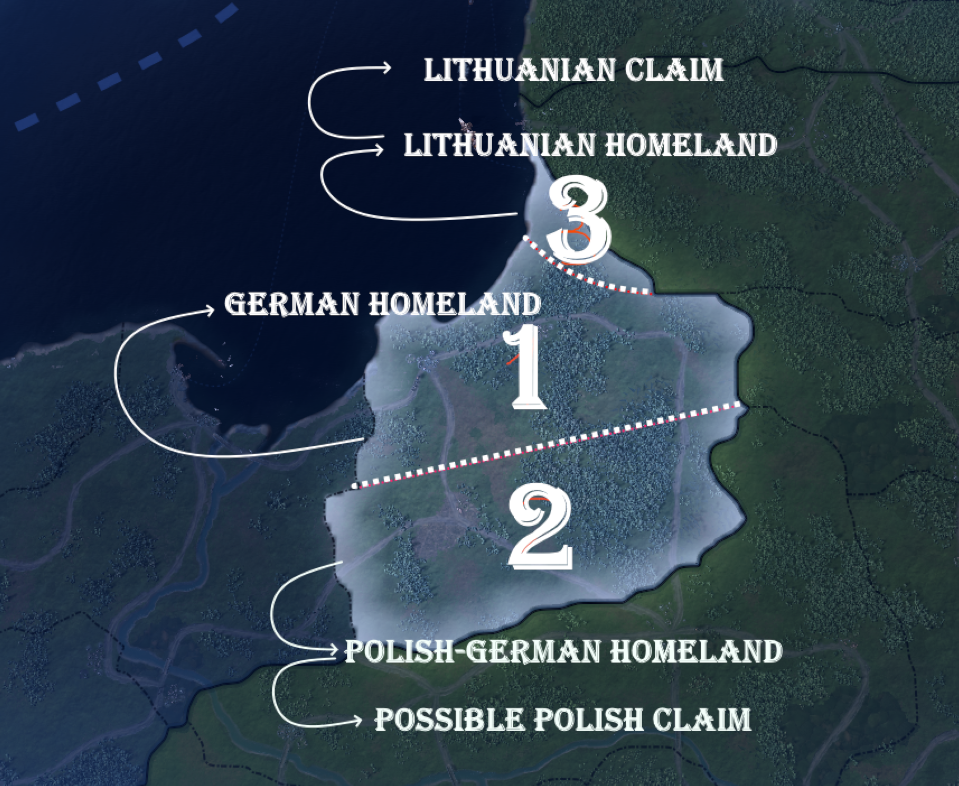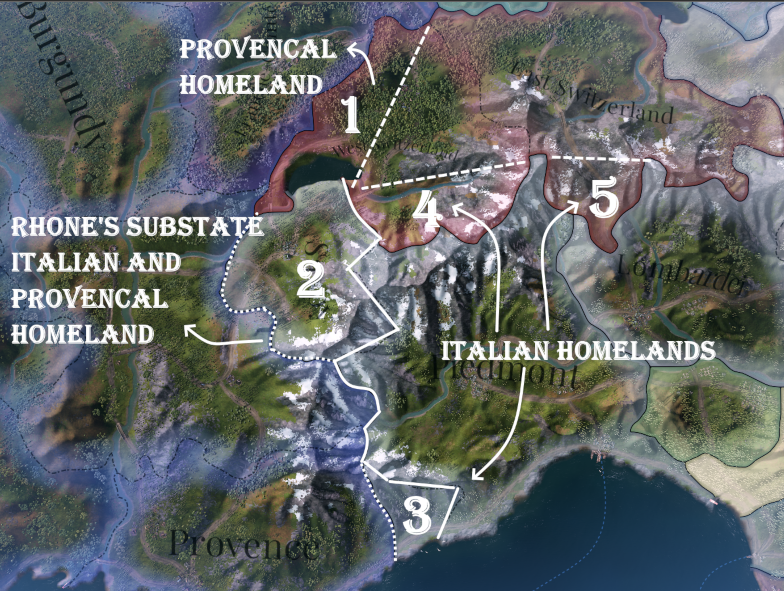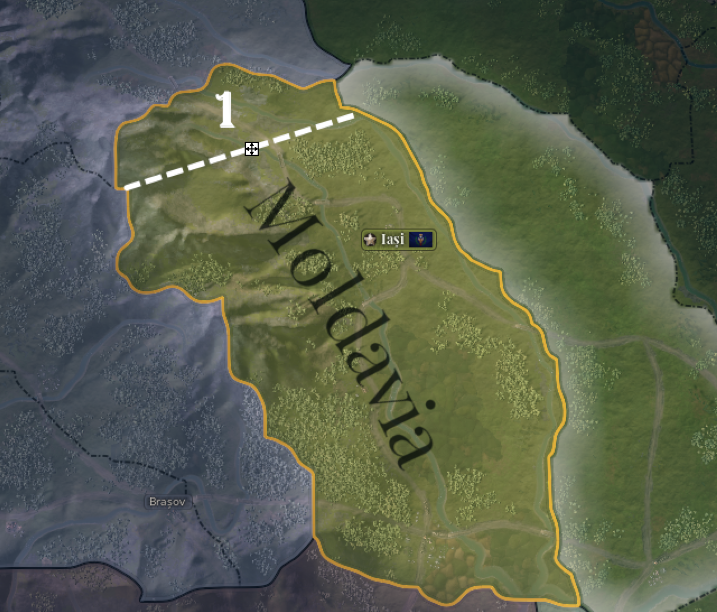Paradox games often expand province counts over time to reflect border changes, expansion opportunities, or historical accuracy. However, in Victoria 3, increasing the number of States poses two critical issues:
Performance: The game’s performance is already strained.
Economic Viability: Smaller States risk becoming economically irrelevant due to low Population or insufficient resources, rendering them useless for late-game objectives.
This creates a problem: given State borders may block players from shaping historical boundaries and political projects (e.g., Magna Graecia).
Proposal: A Substate System (think about it as of pre-seted Splint States)
Introduce Substates—non-functional territorial units within a State that exist solely for granular border control.
Substates have no economic/political functions: No separate Buildings, Population, or resource allocation.
Homelands and Claims can be assigned to Substates, allowing more precise wargoals.
How It Works
Example: East Prussia is a single State with three Substates (check the picture).
Both share the same Population and Buildings pool.
Players/AI can conquer or control individual Substates (e.g., seizing only the Homeland portion).
To ensure discrimination functions properly with substates, States will consider the homelands of all substates under their control. For example, let’s assume that each substate of East Prussia has a single homeland culture: North German, Polish, or Lithuanian. When you control all substates of East Prussia, all three cultures will be treated as its homeland. However, if you lose control of one substate, you will also lose the corresponding homeland associated with that substate.
If Substate is conquered, Split States will be created proportionally dividing Population and Buildings (as happens in civil wars within one-State nations, but also takes into account the Substate's Homeland, assigning more population of a given culture to the corresponding Split State)

The main advantage of these "pre-set" divided states is that they will not affect the game unless the player actively pursues these provinces for larping or if AI aggressively conquering homelands and claims which is extremely rare. So it should MINIMALLY affect performance, while vastly expanding what players can take as wargoals
Additional Benefits
Consolidation Flexibility: Replace clusters of small States with fewer consolidated ones.Example: The northeastern U.S. could merge seven States into two, each containing multiple Substates for granular borders.
Modder Support: Reduces computational strain for mods with high Population counts. Modders can merge States for performance while retaining detailed borders via Substates.
Substates address performance, economic viability, and border flexibility without overhauling core systems. They empower players and modders to balance historical accuracy




Performance: The game’s performance is already strained.
Economic Viability: Smaller States risk becoming economically irrelevant due to low Population or insufficient resources, rendering them useless for late-game objectives.
This creates a problem: given State borders may block players from shaping historical boundaries and political projects (e.g., Magna Graecia).
Proposal: A Substate System (think about it as of pre-seted Splint States)
Introduce Substates—non-functional territorial units within a State that exist solely for granular border control.
Substates have no economic/political functions: No separate Buildings, Population, or resource allocation.
Homelands and Claims can be assigned to Substates, allowing more precise wargoals.
How It Works
Example: East Prussia is a single State with three Substates (check the picture).
Both share the same Population and Buildings pool.
Players/AI can conquer or control individual Substates (e.g., seizing only the Homeland portion).
To ensure discrimination functions properly with substates, States will consider the homelands of all substates under their control. For example, let’s assume that each substate of East Prussia has a single homeland culture: North German, Polish, or Lithuanian. When you control all substates of East Prussia, all three cultures will be treated as its homeland. However, if you lose control of one substate, you will also lose the corresponding homeland associated with that substate.
If Substate is conquered, Split States will be created proportionally dividing Population and Buildings (as happens in civil wars within one-State nations, but also takes into account the Substate's Homeland, assigning more population of a given culture to the corresponding Split State)

The main advantage of these "pre-set" divided states is that they will not affect the game unless the player actively pursues these provinces for larping or if AI aggressively conquering homelands and claims which is extremely rare. So it should MINIMALLY affect performance, while vastly expanding what players can take as wargoals
Additional Benefits
Consolidation Flexibility: Replace clusters of small States with fewer consolidated ones.Example: The northeastern U.S. could merge seven States into two, each containing multiple Substates for granular borders.
Modder Support: Reduces computational strain for mods with high Population counts. Modders can merge States for performance while retaining detailed borders via Substates.
Substates address performance, economic viability, and border flexibility without overhauling core systems. They empower players and modders to balance historical accuracy




- 9
- 1

